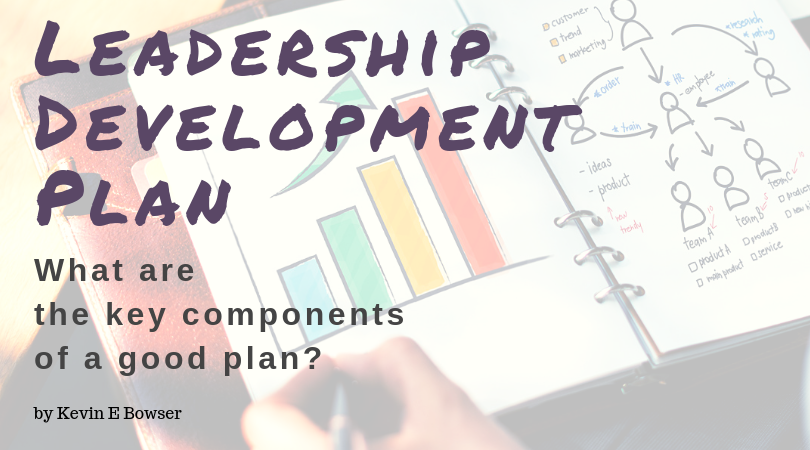What are the key components of any good and well thought out plan? Surely there would be some components to all leadership development plans that would be universal and common regardless of the specific leader being developed. And there are. There are components that are common whether you are a CEO, a front-line supervisor, departmental manager, a military officer, or the pastor of a small church. So, let’s identify what those components would be.
I am approaching this from the perspective of someone who is a coach for individuals who are seeking to become better leaders. So, all of my thoughts and words are based on the premise that I am engaged in a coach and client relationship. It may be a formal paid engagement. Or it may be an informal or ad hoc conversation where someone is coming to me for advice. However, for purposes of this article, I am going to use terms that indicate a coach and client scenario.
So, what are the common components?
Is there a current assessment? — Is there some assessment, either a self-assessment or a 360 assessment, that can be used as a baseline for where the leader is today? If not, why not? If we don’t have a baseline, how will be able to assess progress?
What are the strengths and weaknesses? — Every leader has both strengths and weakness. Great leaders strengths more than overshadow their weaknesses. Poor leaders weaknesses overshadow their strengths. So, let’s identify what those strengths and weaknesses are.
Is there an awareness by the client of their strengths and weaknesses? — Everything rises and falls on awareness from the perspective of emotional intelligence and the process of becoming an emotionally agile leader. So, the client must confront their weaknesses and embrace their strengths as identified by the assessment.
Is there a plan of action? — OK, now I have a level of awareness. What is next? The next step is to create a plan to address what we now know. There needs to be a plan to mitigate the weaknesses and to maximize the strengths and bring those strengths to bear in the most effective way.
Are the planned actions mutually agreed? — Do the coach and the client, or the leader and the organization, agree on a plan of action? There must be mutually agreed. You cannot impose a plan of action. It must be agreed.
Are there measurable progress markers? — Are there specific goals that can be achieved to indicate progress and improvement? What will be the intermediary steps?
What times have been set to reach each of the markers? — How much time will be allotted to reach the markers? Some organizations need much more immediate improvement due to significant leadership failure. And some organizations are seeking incremental improvement over time and therefore, time is not of the essence.
Is there accountability built into the plan? — Accountability is not a “bolt on” once progress and improvement are proving to be more difficult or elusive than initially thought. Accountability must be built-in at the very outset of the plan. It can not be an added feature once the plan is already in trouble.[shareable cite=”Kevin E Bowser” text=”Accountability is not a “bolt on!” It is “built-in” up front. #agileleadership #emotionalagility #accountability”]Accountability is not a “bolt on!” It is “built-in ” up front.[/shareable]
Who will assess the progress? — Who is responsible for deterring if progress has been made? Is it the client? Is it the organization that they lead? Is it an advisory board or some other accountability mechanism?
What are the rewards of success? — Rewards take many forms in many organizations and must be appropriate for each leader and organization. Monetary rewards are easy. But, they may not be possible in all organizations.
What are the implications of failure to make progress? — What if the leader does not make the necessary improvement that the organization needs them to make? Will an adjustment to the plan or the timeline turn it around? Or, upon further assessment, is there no real chance for the leader to develop enough to lead the organization where the organization needs to go?
Is there ongoing support and development opportunity? — Is there ongoing support and mentoring available to the client? Are there additional opportunities for development? What will the coach do to be an available resource? Who else within the organization, or outside the organization, can provide support in addition to the coach?
Some Key Questions for Leaders
Are you aware of how effective you are as a leader? And are you willing to engage a coach to help you develop areas of your style in order to be a better leader and a leader who is more effective in leading an organization? Who is providing you legitimate and unbiased feedback about your leadership performance? Are you seeking constructive feedback from multiple sources? If you are only receiving feedback from your closest friends who “love you no matter what” then you may not be getting legitimate feedback.
Some Key Questions for the Organization
What does the organization do with a leader who is lacking skills and who is equally unwilling to address them? Or, worse than that, what about a leader who has serious deficiencies and is unwilling to even consider a development plan to address them? The organization must know these things and they must consider succession plans or a way to seek new leadership that is willing to lead and that strives for continuous improvement.
Closing Thoughts
These are tough questions. They are tough for everybody. But they are questions that we as leaders need to be asking and responding to on a regular basis. Are you thinking about them? Maybe you are a leader who knows that they are struggling. What are you going to do about it? Maybe you are in an organization and your leader is not moving your organization forward in a significant and measurable way. What will you do?
Leadership Voices, LLC and I are here to help the individual leader and the organization that they lead. We have resources that can be made available to help. Just reach out to me and we can speak confidentially. We can create a custom leadership development plan to fit you and your leadership style.
Are you ready to start a conversation with Kevin about a leadership development plan for you or your organization.
Let’s talk.
I am the husband of a beautiful and wonderful woman. I am the father of two of the greatest kids on the planet. I am a father-in-law to a great young woman. And I am Papa to three very special grandchildren. In my spare time I am an active blogger and writer. And if there is any time left over, I work with small non-profit organizations and churches on the topics of change management, crisis intervention and leadership development.


Trackbacks/Pingbacks